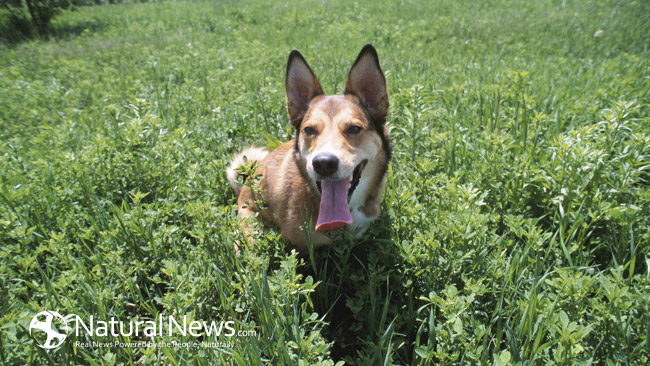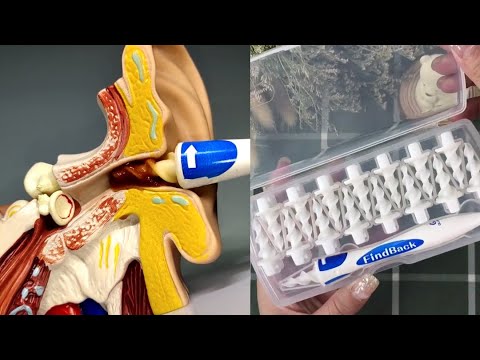Respiratory issues in dogs can be a cause for concern for any
pet owner. Just like humans, dogs can suffer from a variety of
respiratory conditions that affect their airways and lungs, which are
essential for breathing.
Some of the common
respiratory problems in dogs include infectious diseases like kennel
cough, inflammatory conditions like bronchitis, and even more serious
ailments such as pneumonia.
It’s important for dog owners to recognize the signs of respiratory distress and seek veterinary care promptly.
Recognizing the symptoms of respiratory issues in dogs is key to providing timely treatment and ensuring a quick recovery.
Clinical
signs can range from mild to severe and typically include coughing,
sneezing, nasal discharge, rapid or labored breathing, and changes in
appetite or energy levels.
While some symptoms may
resolve on their own or with minimal intervention, others could indicate
a serious health problem requiring professional veterinary attention.
Key Takeaways
- Respiratory issues in dogs require prompt attention for effective management and treatment
- Symptoms such as coughing, sneezing, and lethargy are common indicators of respiratory distress
- Regular veterinary check-ups and vaccinations are important in preventing respiratory diseases in dogs
Common Respiratory Problems in Dogs
Respiratory
issues in dogs can span from mild irritations to severe infections, all
of which require attentive care. It’s important for dog owners to
recognize the symptoms and understand the causes to ensure prompt
treatment. Below are some of the common ailments affecting our canine
companions.
Kennel Cough
Kennel
cough, also known as canine infectious respiratory disease complex, is a
highly contagious illness characterized by a robust, hacking cough.
It’s a term that describes a complex of infections—viral and bacterial—which includes the likes of Bordetella bronchiseptica. This condition can lead to pneumonia in severe cases, so early detection and treatment are vital.
Canine Distemper
A serious viral disease, canine distemper affects a dog’s respiratory, gastrointestinal, and nervous systems.
Symptoms often start with an infectious cough, progress to pneumonia, and can sometimes lead to fatal outcomes. There is no known cure, but vaccination is an effective preventive measure.
Canine Influenza
Canine influenza, or dog flu, has two identified strains, H3N8 and H3N2, both of which can lead to significant canine respiratory illness.
It
typically manifests as a persistent cough and can include a runny nose
and fever. Most cases are mild, but some dogs can develop secondary bacterial pneumonia, which warrants careful monitoring and treatment.
Symptoms and Clinical Signs of Respiratory Issues
When
their dog starts showing signs of respiratory trouble, pet owners might
notice symptoms like persistent coughing or sneezing, difficulty
breathing, or an unusual nasal discharge. Understanding these symptoms
can be key to recognizing when it’s time for a vet visit.
Coughing and Sneezing
Coughing in dogs can range from a dry, hacking cough to a more moist cough that suggests phlegm may be present.
Sneezing
in dogs is often a response to irritation of the nasal passages, and
while it can be harmless, frequent sneezing coupled with other symptoms
may indicate a respiratory issue.
-
Coughing
- Dry, hacking cough
- Moist cough with phlegm
-
Sneezing
- Occasional vs. persistent sneezing
- Accompanied by nasal discharge
Labored Breathing
Labored breathing, or dyspnea, indicates that a dog is struggling to breathe.
Pet
owners may notice their dog breathing with more effort, faster than
usual, or even appearing to use their abdominal muscles to help them
breathe.
- Signs of Dyspnea
- Increased effort to breathe
- Abdominal breathing
- Fast breathing
Nasal Discharge
Nasal discharge is another sign of potential respiratory issues in dogs.
The
discharge may be clear or may have color, such as yellow or green,
which can suggest an infection. Consistency can also vary from watery to
thick mucus.
- Characteristics of Nasal Discharge
- Clear, watery discharge
- Colored (yellow or green) discharge
- Thick mucus
Causes and Risk Factors for Respiratory Diseases
Respiratory
diseases in dogs can stem from various sources, ranging from pathogen
infection to environmental triggers. Understanding these factors is
crucial in protecting our canine companions from such illnesses.
Infection from Viruses and Bacteria
The culprits in many respiratory diseases in dogs are viruses and bacteria.
A common viral cause is canine distemper which affects the respiratory, gastrointestinal, and nervous systems of dogs. On the bacterial side, Bordetella bronchiseptica is a significant pathogen responsible for kennel cough, a highly contagious respiratory disease.
Because
these microbes can easily spread from one dog to another, especially in
crowded environments, they present a substantial risk for our pets.
Environmental Factors
Environmental irritants play a role in the health of a dog’s respiratory system.
Dogs
exposed to secondhand smoke, pollutants, or chemical fumes may develop
respiratory issues due to the continual irritation of their airways.
Seasonal allergies can also prompt respiratory problems when dogs inhale
allergens like pollen.
Underlying Health Issues
Underlying health conditions, such as a compromised immune system, can make dogs more susceptible to respiratory diseases.
Dogs
with pre-existing afflictions or chronic diseases may lack the strength
to efficiently fight off pathogens, rendering them vulnerable to
infections and complications.
Identifying and managing these underlying causes is essential for maintaining respiratory health.
Diagnosis and Treatment of Canine Respiratory Issues
When
a beloved pet starts coughing or shows signs of breathing difficulties,
it’s time for a trip to the vet. Modern veterinary medicine offers a
number of diagnostic tests to identify the cause, and a range of
treatments to help a dog breathe easier and recover from respiratory
issues.
Veterinary Diagnostic Tests
Veterinarians use a variety of diagnostic tests to pinpoint the specific cause of respiratory troubles in dogs.
Blood tests can reveal signs of infection, while x-rays and ultrasound may visualize abnormalities in the lungs or airways.
In some cases, bronchoscopy—a
procedure where a tiny camera is introduced into the airways—helps to
directly assess the extent and nature of any damage or obstruction.
- Physical Examination: Listening to the lungs with a stethoscope for abnormal sounds
- Chest X-rays: For a visual assessment of the lungs and heart
- Complete Blood Count (CBC): To check for signs of infection or inflammation
- Tracheal Wash: Collecting fluid from the trachea to look for pathogens
- Bronchoscopy: A detailed look at the trachea and bronchi using a camera
Medications and Supportive Care
Once the problem is diagnosed, veterinarians can prescribe specific medications.
Antibiotics
are often used if a bacterial infection is confirmed. In cases where
breathing is difficult, bronchodilators might be given to relax and open
up the air passages.
Corticosteroids may also be used to reduce inflammation in the airways.
- Antibiotics: For bacterial infections – (e.g., Doxycycline or Amoxicillin)
- Bronchodilators: To widen the airways and ease breathing
- Corticosteroids: To reduce inflammation in the respiratory system
Supportive care is just as important in the healing process.
Providing
a calm and stress-free environment, along with sufficient hydration and
proper nutrition, plays a significant role in recovery.
Vaccinations
can be crucial in prevention, especially against contagious illnesses
like kennel cough, ensuring the well-being of the pack as a whole.
The veterinarian may also recommend rest and a temporary reduction in physical activities so the dog can recuperate fully.
Prevention and Management
When
it comes to our furry friends’ health, preventing respiratory issues
can save lives and spare them from discomfort. Management strategies
ensure they bounce back swiftly if they do catch a bug.
Vaccinations and Immunization
Vaccinations are a pet parent’s frontline defense against respiratory diseases.
By fostering a strong immune system, vaccines significantly reduce the risk of severe illness.
Core vaccines protect against canine distemper and adenovirus, both of which affect the respiratory system.
Additionally, the bordetella vaccine is recommended for dogs frequently visiting boarding facilities or dog parks, where kennel cough easily spreads.
- Recommended Vaccines:
- Canine Distemper
- Adenovirus Type 2
- Parainfluenza
- Bordetella (Kennel Cough)
Regular veterinary care, including booster shots, is vital to maintain immunity over the years.
Talk to the vet about the best vaccination schedule for your dog—they’re there to help!
Hygiene and Environmental Control
Keeping a dog’s environment clean is crucial for respiratory health.
Regular cleaning of bedding, bowls, and toys helps prevent the spread of pathogens.
- Tips for Hygiene and Control:
- Sanitize bowls and toys weekly
- Replace or wash bedding frequently
- Use air purifiers to reduce airborne contaminants
- Avoid smoke or strong fumes around pets
If a dog is diagnosed with a respiratory illness, isolation from other pets can prevent transmission.
For
those who board their dogs or use doggy daycares, choosing facilities
with strict hygiene practices can reduce exposure to airborne illnesses.



